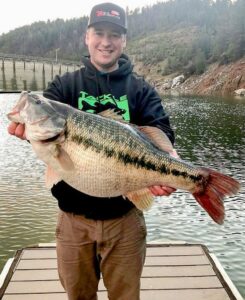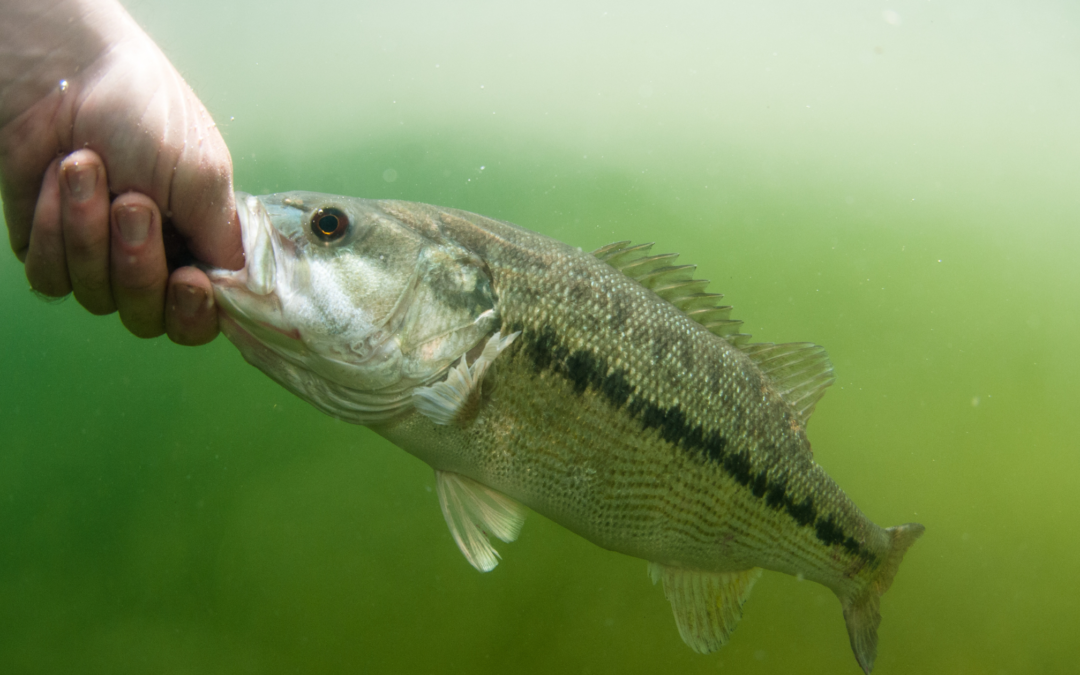For thirteen years, I have studied Spotted Bass. These freshwater fish are a challenge and a ton of fun to catch, provided you know their habits. They are freshwater fish in the black bass family.
Their native range extends from Texas to Florida and as far north as the Ohio River basin, including areas such as:
Georgia, Kentucky, Alabama, Mississippi, Tennessee, Texas and Florida.
Though native to the central and southern United States, spotted bass have been introduced to other areas within the country and in other parts of the world. They can adapt to a wide range of habitats, which has contributed to their successful establishment in non-native areas. One of the largest Spots caught was by my friend Cody Meyer, out of Bullards Bar Reservoir in Northern California. Cody came out with me before the 2010 FLW Tournament on Lake Lanier. 

10.8 lbs
First, let’s talk habitat. Spotted bass are found in various water bodies across the country, particularly in states like Georgia, Kentucky, Alabama, Mississippi, Tennessee, Texas, and Florida. Of course, my personal favorite is Lake Lanier in Northern Georgia. They’re quite the fans of clear to moderately clear waters, making lakes and reservoirs ideal stomping grounds. Look for ample structure and cover, such as submerged vegetation, rocky shorelines, and underwater structures like submerged timber or brush piles. It’s almost like a scavenger hunt, and your prize is a striking Spotted bass.
Don’t discount rivers and streams either. Our Spotted friends often inhabit slower or moderate-flow water bodies. They’re fans of rocky structures, submerged logs, undercut banks, and areas with current breaks. Essentially, wherever there’s a good hiding place, there’s a good chance you’ll find a Spotted bass.
The water’s depth matters too. Typically, Spotted bass frequent depths between 10 to 30 feet, but they’re versatile creatures and adapt to the seasons. During spawning season, for example, they gravitate towards shallower areas near the shore. And during the chilly winter months, you’ll often find them deeper, sometimes even beyond 60 feet in places like Lake Lanier.
Now, understanding their habitat is half the battle. To be truly successful, we need to know their behavior patterns too. Spotted bass are opportunistic feeders and often feed during low-light conditions, like early morning or late evening. Their diet is varied, including small fish, crayfish, insects, and crustaceans.
One thing I always find fascinating about Spotted bass is their strong affinity for structure. They’re structure-oriented and prefer to hang around submerged structures like rocks, fallen trees, and brush piles. This behavior makes them efficient predators, using these structures for shelter and as a vantage point to ambush prey. So, always remember – fishing around these structures increases your chances of a catch.
They also exhibit seasonal movements, mainly due to water temperature and spawning behavior. During spring, they’re drawn to the shallower areas near the shore for spawning. As the summer heat intensifies, they seek solace in deeper waters, often near ledges and drop-offs. Come fall, they follow the baitfish migrations, occupying various depths.
Finally, let’s talk about their temperament. Spotted bass are known for their aggressive nature. As an angler, you can use this to your advantage. They’re easily provoked into striking lures or bait presentations that mimic their preferred prey. I’ve always admired their fighting spirit – they are tenacious when hooked, which makes them a worthy opponent for any angler.
Understanding the Spotted bass – their habitat preferences and behavior patterns – is crucial to increase your fishing success rate. By focusing on their preferred habitats and adapting to their behavior throughout the seasons, you’ll not only locate them more effectively but also select the most appropriate techniques and lures to get them to bite.
Knowledge is power in the fishing world, so keep learning. To help, I have a Weekly Video Subscription that offers you very detailed and specific information regarding how Jimbo has been catching fish this week! Best Patterns, Lure types, sizes, and colors will all be detailed, in addition to specific presentation insights and “How To” direction that is sure to make the difference! Also included will be information on types of locations that have been targeted for each pattern discussed, coupled with map-denoted locations that have been producing fish that week! This information transfers easily to other lakes, to increase your caching opportunities!


Fantastic article that you have written on this subject!! This will be my first year fishing tournaments that will have spotted bass. I am trying to absorb as much info as I can on them.
Keep your lines wet!!
Roy
During a tournament lots of Spots are moved from an area and to the weigh in.
After being released, do they return to their previous area?
Hi Gary – thanks for your question. Biological studies that I’ve read do indicate that most fish released from a tournament weigh-in site do return to the area where they were caught, if indeed they were “resident” fish. Some fish in Lanier are Lake Fish, and actually travel with the Blue Back Herring and don’t have “homes”. Further, I’ve found that fishing around a release point 1-3 days after a derby can be a good strategy is what I’ve seen. Also, my experience indicates the lake will fish tougher the next day or 2 after all the pressure of a big tournament on the lake. Hope this helps!